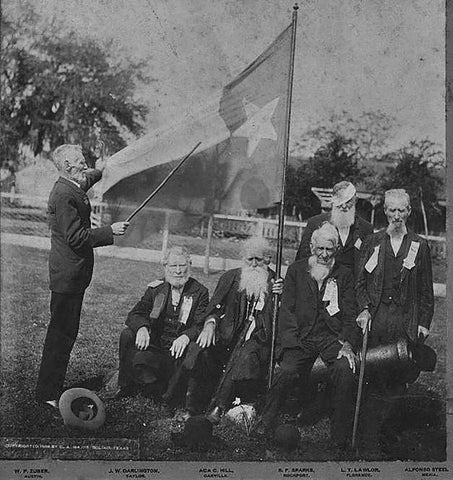The Battle of San Jacinto: Turning Point in Texas Independence

“The Battle of San Jacinto” by Henry Arthur McArdle, painted in 1895.
The Battle of San Jacinto, fought on April 21, 1836, near present-day Houston, Texas, was a pivotal event in the Texas Revolution. Lasting only 18 minutes, it marked the decisive victory of Texian forces under General Sam Houston over the Mexican army led by General Antonio López de Santa Anna. This article aims to demonstrate the critical role played by the Battle of San Jacinto in securing Texas independence.
The roots of the Battle of San Jacinto lie in the Texian quest for independence from Mexican rule. Mexican authorities, wary of the influx of American settlers and their desire for self-governance, implemented policies that restricted immigration and religious freedom, fueling discontent among the Texian population. This culminated in the formation of provisional governments and declarations of defiance, with violence erupting in 1835 at the Battle of Gonzales, officially starting the Texas Revolution.
Following the Texas Declaration of Independence on March 2, 1836, tensions escalated between Texian settlers and Mexican authorities. The subsequent seizure of the Alamo by Mexican forces and the massacre of its defenders further fueled Texian determination to break free from Mexican control.
Strategically, the Battle of San Jacinto unfolded against a backdrop of critical developments. General Santa Anna, having recently defeated Texian rebels at the Battle of the Alamo and the Goliad Massacre, was confident of subduing the Texian insurgency. However, Texian forces, under the leadership of General Sam Houston, strategically retreated, biding their time and waiting for the opportune moment to strike back.
Santa Anna, believing the rebellion crushed, divided his army and pursued the fleeing Texians. Houston, a seasoned military leader, understood the need for strategic retreat, employing Fabian tactics to draw Santa Anna's exhausted army further east towards the San Jacinto River.
The Battle of San Jacinto itself was a brief yet intense engagement. Texian forces, numbering around 900 men, launched a surprise attack on the afternoon of April 21, catching the Mexican army of approximately 1,400 soldiers off guard.
The Texian army rested in a fortified position opposite the Mexican force prior to the attack, while Santa Anna, eager for a decisive battle and underestimating the Texans, made a critical error. He allowed his exhausted troops to camp in a disorganized fashion, neglecting basic precautions. Taking advantage of this vulnerability, Houston launched the attack shortly after noon.
Fueled by cries of "Remember the Alamo! Remember Goliad!" as they charged into the Mexican camp and bolstered by their desperate struggle for freedom, the Texans overwhelmed the surprised Mexican forces.
The element of surprise, coupled with Texian ferocity and the strategic advantage of the terrain, led to a swift and decisive Texian victory. Within just 18 minutes, the Mexican army was routed, with over 600 soldiers killed and 700 taken prisoner, including General Santa Anna himself. In contrast, Texian casualties were minimal, with only nine killed and around 30 wounded.

"Surrender of Santa Anna" by William Henry Huddle. The painting depicts the Mexican president and general surrendering to Texas General Sam Houston at the Battle of San Jacinto.
The aftermath of the Battle of San Jacinto reverberated far beyond the battlefield. The capture of General Santa Anna effectively ended Mexican resistance in Texas. In a subsequent peace treaty, the Treaties of Velasco, signed on May 14, 1836, Santa Anna agreed to recognize Texas as an independent nation, marking the official end of the Texas Revolution.
The Battle of San Jacinto stands as a testament to the determination and bravery of the Texian forces in their quest for independence. Despite being outnumbered and outgunned, they achieved a remarkable victory that changed the course of history. The Battle of San Jacinto not only secured Texas independence but also set the stage for the annexation of Texas by the United States in 1845, shaping the geopolitical landscape of North America for years to come.

Photograph of the Army of the Republic of Texas Veteran Reunion on April 21, 1906. From left-to-right are William P. Zuber, John W. Darlington, Aca C. Hill, Stephen F. Sparks, L. T. Lawlor, and Alfonso Steele, who all participated in the Battle of San Jacinto.
